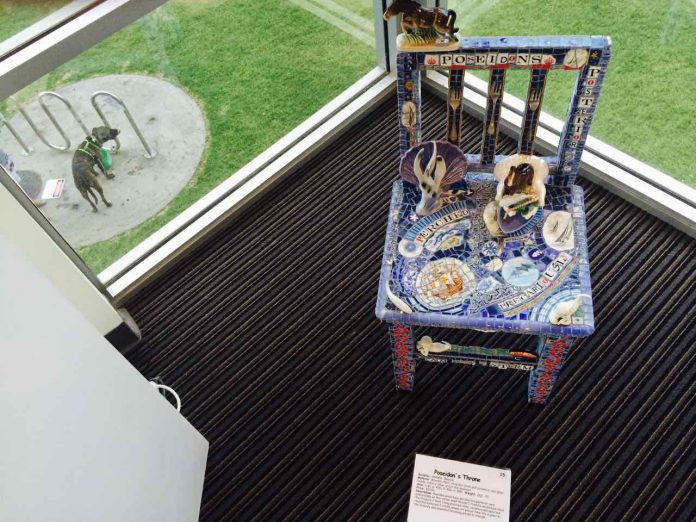The Rise of Poseidon
The Poseidon bubble lesson is an important lesson taught by Poseidon after the Greek God skyrocketed on the Australian Stock Exchange.
In 1969, at the height of the Vietnam war, there was huge demand for nickel.
At the time, the world’s major supplier of nickel was the Canadian company, Inco. Back then Inco was experiencing huge difficulties with ongoing strikes. The restriction in supply of nickel and the higher demand led to nickel prices being at record highs.
In September 1969, a prospector named Ken Shirley who worked for Poseidon NL, discovered a promising nickel deposit at Windarra in the Shire of Laverton, Western Australia.
Poseidon NL (no liability) claimed the discovery to be one of the largest nickel deposits in the world. Shares in the company soon became one of the hottest investments to own on the planet. Part of Poseidon’s allure was the limited number of shares available when the run began, as only a couple of million shares were issued. The demand for Poseidon shares was incredible.
Poseidon shares were trading at $0.80, but after the announcement of the discovery, the price quickly rose to $12.30 on October 1, 1969.
The Bandwagon Mentality
Other companies quickly joined the bandwagon, claiming that they were also on the nickel trail. Investors ate it up.
As the price of Poseidon shares started to skyrocket, many investors took chances with other mining stocks, especially with other companies having interests in nickel.
Many companies even listed on the stock exchange to take advantage of investors.
Tasminex NL, listed on November 13, 1969. This mining exploration company issued a couple of million shares, following Poseidon’s lead.
In its prospectus, Tasminex explained that it intended to explore for iron ore, south of Burnie in Tasmania. They quickly changed tact though and started dealing with an unlisted company named Tin Creek Mining Group, which had some claims at Mt Venn, which is located 125 km east of Laverton in Western Australia.
Tasminex bought 60 percent of Mt Venn from Tin Creek Mining Group. They drilled a few exploration holes and quickly made grand claims about another vast nickel deposit at Mt Venn in Western Australia. The chairman of the company even suggested that it could be even bigger and better than that of Poseidon’s claim. This all happened without any thorough detailed geological evidence.
Based on a vague report, Tasminex shares rocketed in price.
On January 27, 1970, shares in Tasminex rose from $3.30 to $16.80 in just two days, based on optimistic rumours that it had found a huge nickel site. The price then rose to $96 after English traders pushed up the price even further. The price eased back to $75 and then $40 over the next few days but even so, the price of the stock was exceptionally high compared to its original listing price.
The chairman of Tasminex sold his shares at relatively high prices during this period. He made a million dollars or so, which at that time could buy three of the finest mansions in Sydney Harbour.
By February 10, 1970, Poseidon’s peak price had reached $280 per share. The price probably didn’t sound too crazy, because a broker from a brokerage house in London suggested that Poseidon’s value could be worth as much as $383 per share.
Poseidon Bubble in Australia
In February 1970, just after many of the mining stocks reached their peak price, prices started to fall. The Poseidon bubble burst.
Australian mining stocks began to crash and quickly went downhill leaving many investors out of pocket.
Tasminex never did find nickel deposits like they wanted others to believe. Mt Venn lay untouched for decades afterwards. Mineral deposits were pretty much fabricated to capture the attention of nickel investors at the height of the nickel craze.
Poseidon Aftermath
The financial losses faced by many of the investors ultimately led to Australia’s national companies and securities legislation. It led to stricter mining reporting standards. Many of the phoney mining companies in the bubble didn’t even have a mining lease.
Poseidon’s own mine didn’t produce nickel until 1974.
When Poseidon actually started producing nickel, world nickel prices were at rock bottom. The other problem was that the ore had a lower grade than originally thought.
Poseidon went into receivership in 1975 because of high extraction costs and insufficient profits. It was taken over by Western Mining and operated until 1991.
A mining magnate took control of the Poseidon company in the late 1980s, making it part of Normandy Mining, the largest gold miner in Australia.
Then in 2001, Newmont Mining Corporation took over Normandy Mining and Poseidon. At the same time acquired Canadian company Franco-Nevada.
This resulted in Newmont Mining Corporation becoming the world’s largest producer of gold.
What can we learn from the Poseidon Bubble?
To get a better idea watch:
Nickel Queen (1971) – An Australian comedy film loosely based on the Poseidon bubble.
https://youtu.be/tXZLhX-UptI
The world premier screened on April Fools Day, 1971, for good reason.
The main lesson:
Be very careful when dealing with the Greek Gods!





